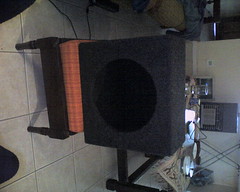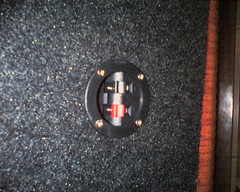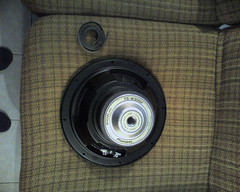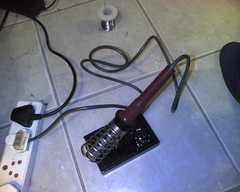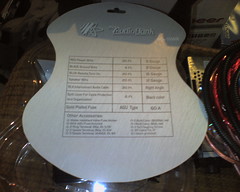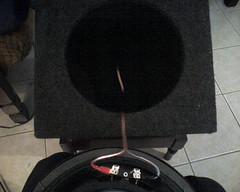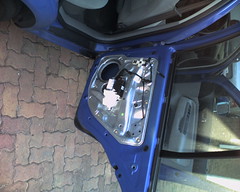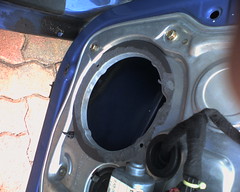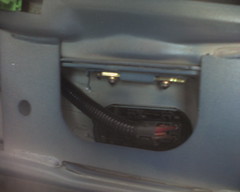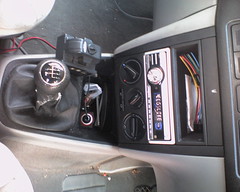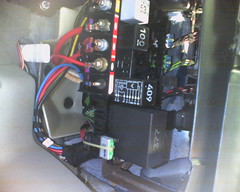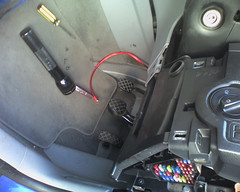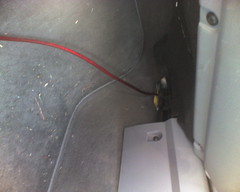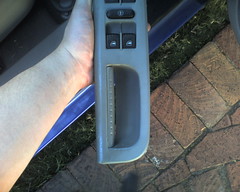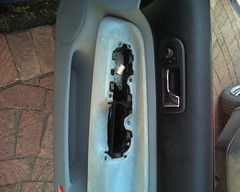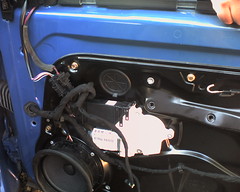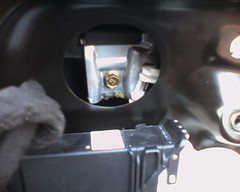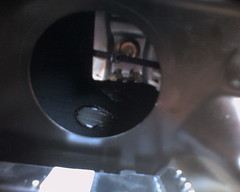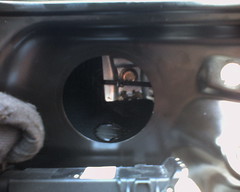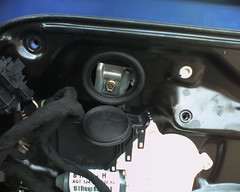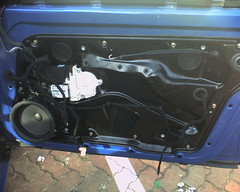Golf IV sound system installation
As the description of this page indicates, I wanted to install a sound system in my car. This is it! It is done and works like a charm. I just need to fine tune the cutoff frequency and gain of the sub then its all done.
Below is a somewhat incomplete description of what was done.
Specs:
Car: Golf 4 1.6 Comfortline ('99 model)
Radio: JVC KG-D511 4x50 W with RCA outputs for both front and rear. Shuttle input and remote control (extra)
Amp: Audiobank 2x300 W, build-in bridging and filters: LPF 10-250 HZ.
Speaker: Pioneer 800 W 12 inch.
This is the box for my yet to be completed sub woofer.
This is a pic of the inside of the sub. Note the connector where the wiring for the speaker will go.
As with the 'Subwoofer box inside peek' this is the connector for the speaker wiring. It provides an easy method for connecting and disconnecting the enormous box to create extra space in the boot when needed.
This is the topside of the speaker to be used in the sub. It is a 12" 800 W (350 W nominal) pioneer. Note the tape on the upper left. This is used to seal the speaker to the box. Yes, this must be done.
Yet another must. Solder the connections of the speaker to the connector. The wires wont stay there by spit alone.
Another view of the speaker. Note the connectors. These don't have to be soldered as the wiring kit supplied by audiobank comes with suitable connectors.
We need some serious wires to drive the sub. 12 Gauge should do the trick.
Audiobank supplies a very nice kit with all the wires and connectors you may need. It also includes a 60 A fuse.
Nice and neat! Note the tape at the speaker edge. When the self tapping screws are pulled tight this should create a good seal and prevent vibration and rattling.
Golf 4 rear door with panel removed. Very easy indeed. Remove the small screws at the bottom of the panel - they require a special screwdriver (not the usual star) or a very willing swiss army knife. I used the latter. The door handle must be removed first as there are a number of big screw inside that must be removed. After that is done the panel just clips off.
This is where the speaker goes. My 99 model golf 4 has wires for the rear speakers in front, but I couldn't find them anywhere.
My 99 model golf 4 has wires for the rear speakers in front, but for the life of me I couldn't find them anywhere in the rear. So I used my own. This is the inside of the panel just above the seat belt mechanism. All the panels click into place. Use a screwdriver (gently now) to pop them off.
Pop this off with a screwdriver and feed the speaker wires through.
Yes, not the most expensive, but the JVC KGD511 does the trick, very nice indeed. The VW Beta (and Gamma) radios need a special tool to remove it. Go to your nearest friendly VW dealer and surely he will help you.
It took me the better part of the afternoon to find a spot where I can pull the 12 V power from the battery through the the interior. Where are all the hole that I had in my old Honda? No wonder the Golf is so quite. There isn't a spot for the sound to get through. Don't bother looking for one. Remove the panel on the driver side just above the pedals. You'll find 3 wires that come from the battery. The thick one (at the top) comes from my battery through a 100 A fuse and is then fused again through a 30 fuse. That leaves plenty of juice for the amp. Remember the fuse for the amp! We don't want anything critical dying on us.
My audio cables and remote are routed on the right side of the car. This means the power must go to the left. Theres plenty of space under there.
The power cable is later lifted and routed on to of a panel under the cubby and then the panel to the left.
The power comes through the center console. Plenty of holes for the wires.
